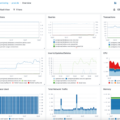A masquerade attack is one of the most serious security threats to organizations and individuals alike. It involves an unauthorized user pretending to be someone else to gain access to confidential information or systems. This type of attack has become increasingly common as cybercriminals employ sophisticated techniques to gain access and exploit weaknesses in networks.
At its simplest, a masquerade attack involves an attacker creating a false identity, such as a fake email address or username, and using it to gain access to sensitive information. The attacker may also use social engineering techniques such as phishing emails or malware downloads to gain access. Once inside, they can then view privileged documents, steal passwords, modify data, and even launch malicious code on the system.
In order to prevent masquerade attacks, organizations should implement strong authentication protocols such as multi-factor authentication (MFA). MFA requires users to provide two or more factors of identification before logging into a system. These could include something you know (such as a password), something you have (such as a security token or key fob), or something you are (such as biometric data). MFA is becoming increasingly popular and is highly effective at preventing masquerading attacks because it creates an additional level of security beyond just relying on usernames and passwords.
Organizations should also regularly review their network security policies and systems for any potential weaknesses that could be exploited by attackers. Keeping up-to-date with the latest security patches can also help reduce the risk of attacks by ensuring any known vulnerabilities are addressed quickly. Finally, having strict user access controls in place can help limit the damage caused by any successful masquerade attack by limiting what an attacker can do if they do gain access.
Masquerade attacks are very real threats that can result in significant financial losses for an organization if not properly defended against. By implementing strong authentication protocols and regularly reviewing their networks for vulnerabilities, organizations can greatly reduce their chances of falling victim to this type of attack.

Understanding Masquerading Attacks
A masquerading attack is a type of cyber-attack that involves a malicious actor pretending to be someone else in order to gain access to confidential information. This attack is also referred to as identity theft. The attacker will use stolen or faked credentials, such as usernames and passwords, in order to gain access to accounts and systems that they would otherwise not be able to access. Once the attacker has gained access, they are then able to take advantage of any vulnerable systems, steal data or even cause damage. Masquerading attacks can occur on any networked device or system, including computers, servers, mobile phones, and even home networks. The most common example of this type of attack is phishing emails disguised as legitimate emails from trusted sources in order to trick users into revealing confidential information or downloading malicious software. Companies must protect themselves from these attacks by implementing robust security measures such as two-factor authentication, monitoring user activity for suspicious behavior and regularly changing passwords.
Understanding the Concept of Masquerade in CyberSecurity
A masquerade in cyber security is a type of malicious activity whereby an unauthorized user or entity pretends to be an authorized one. This type of threat action could involve an attacker gaining access to a system or performing a malicious act by illegitimately posing as an authorized entity. To do this, the attacker may use stolen credentials, such as usernames or passwords, and they may also use methods such as IP address spoofing, session hijacking, and other methods designed to trick the system into thinking that they are legitimate users. If successful, the attacker can gain access to sensitive data or manipulate systems for their own gain. Masquerading can have serious consequences for organizations and users, so it’s important for everyone to take steps to protect themselves from this type of attack.
Is Masquerade Attack an Example of an Active Attack?
Yes, a masquerade attack is an example of an active attack. It is an attack in which one person pretends to be someone else and then alters the system or data. This can be done by deleting, corrupting, or altering information stored on the system. It is a malicious act that can have serious implications for the security of a system or network.
Examples of Masquerade Attacks
Masquerade attacks are a form of cyber attack in which an attacker impersonates another user, typically by using stolen credentials such as usernames and passwords, in order to gain unauthorized access to networks, systems, and data. Examples of masquerade attacks include:
1) Phishing: A type of social engineering attack in which an attacker sends emails purporting to be from a legitimate source (such as a bank or online store) that contain malicious links or attachments. These links or attachments can be used to gain access to the victim’s system or personal information.
2) Impersonation: An attacker pretending to be someone else, typically via email or instant messaging applications, in order to gain access to sensitive information or accounts.
3) Man-in-the-middle attack: An attacker intercepts communications between two parties in order to gain access to sensitive information.
4) Session hijacking: An attacker takes control of a user’s session on a website by stealing their login credentials, allowing them to access their account without authorization.
5) Password sniffing: An attacker eavesdrops on network traffic in order to capture usernames and passwords that are sent over the network without encryption.
Is Masquerading a Criminal Offense?
Yes, masquerading is a crime. It is considered a form of fraud, identity theft, or cyber espionage. The perpetrator creates an account with the same name and/or email address as the executive they are posing as in order to gain access to confidential information or resources. This can include stealing money, data, or intellectual property. Masquerading is a crime that carries serious legal consequences for those who are caught. Depending on the severity of the offense and on where it took place, penalties may include fines or even imprisonment.
Masquerading Attacks vs Man-in-the-Middle Attacks
A masquerading attack is a type of cyber attack where an attacker pretends to be someone else or something else in order to gain access to sensitive information. This could be done by setting up a malicious access point pretending to be a legitimate one, or by logging into a system as another user. The goal of the attacker is usually to steal data or gain access to resources that they normally wouldn’t have access to.
A man-in-the-middle attack, on the other hand, is an attack whereby an attacker intercepts communications between two parties and gains control over the flow of information between them. The attacker may be able to eavesdrop on conversations, alter messages sent between the two parties, and even hijack sessions. In essence, the attacker acts as a middleman between two legitimate parties and can manipulate their communication with each other. The goal of this type of attack is usually also to gain access to sensitive information or resources that would otherwise not be available.
Conclusion
In conclusion, masquerade attacks are a particularly dangerous form of cyber attack that can result in the alteration or destruction of data and systems. By pretending to be someone else, attackers are able to gain access to systems and data they would otherwise not be able to access. The best way to protect against masquerade attacks is by implementing strong authentication processes, monitoring user behavior for abnormal activity, and regularly updating systems and software. With the right security measures in place, organizations can protect their data from malicious actors and ensure their systems remain secure.








